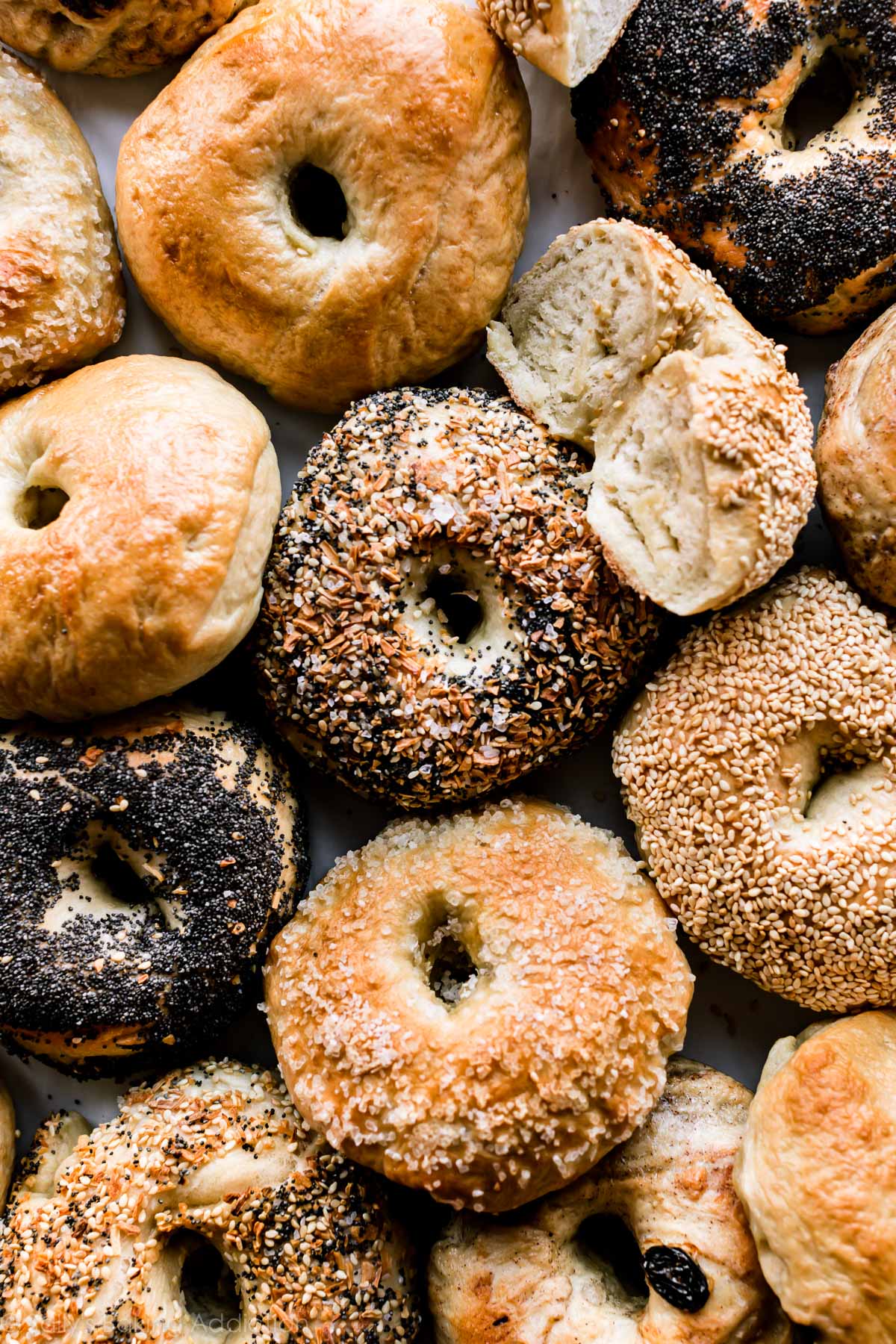Part of:
Bread
Ingredients:
- 1 and 1/2 cups (360ml) warm water (between 100-110°F, 38-43°C)
- 2 and 3/4 teaspoons instant or active dry yeast*
- 4 cups (520g) bread flour (spooned & leveled), plus more for work surface and hands*
- 1 Tablespoon granulated sugar or packed light or dark brown sugar (or barley malt syrup)*
- 2 teaspoons salt
- coating the bowl: nonstick spray or 2 teaspoons olive oil
- egg wash: 1 egg white beaten with 1 Tablespoon water
- 2 quarts water
- 1/4 cup (60g) honey (or barley malt syrup)* {
Instructions:
- Whisk the warm water and yeast together in the bowl of your stand mixer fitted with a dough hook attachment. Cover and allow to sit for 5 minutes. *If you don’t have a stand mixer, simply use a large mixing bowl and mix the dough with a wooden spoon or silicone spatula in the next step.
- Add the flour, brown sugar, and salt. Beat on low speed for 2 minutes. The dough is very stiff and will look somewhat dry.
- Keep the dough in the mixer and beat for an additional 6-7 full minutes, or knead by hand on a lightly floured surface for 6-7 full minutes. (If you’re new to bread-baking, my How to Knead Dough video tutorial can help here.) If the dough becomes too sticky during the kneading process, sprinkle 1 teaspoon of flour at a time on the dough or on the work surface/in the bowl to make a soft, slightly tacky dough. Do not add more flour than you need because you do not want a dry dough. After kneading, the dough should still feel a little soft. Poke it with your finger—if it slowly bounces back, your dough is ready to rise. You can also do a “windowpane test” to see if your dough has been kneaded long enough: tear off a small (roughly golfball-size) piece of dough and gently stretch it out until it’s thin enough for light to pass through it. Hold it up to a window or light. Does light pass through the stretched dough without the dough tearing first? If so, your dough has been kneaded long enough and is ready to rise. If not, keep kneading until it passes the windowpane test.
- Lightly grease a large bowl with oil or nonstick spray. Place the dough in the bowl, turning it to coat all sides in the oil. Cover the bowl with aluminum foil, plastic wrap, or a clean kitchen towel. Allow the dough to rise at room temperature for 60-90 minutes or until double in size.
- Line two large baking sheets with parchment paper or silicone baking mats.
- When the dough is ready, punch it down to release any air bubbles. Divide the dough into 8 equal pieces. (Just eyeball it—doesn’t need to be perfect!) Shape each piece into a ball. Press your index finger through the center of each ball to make a hole about 1.5 – 2 inches in diameter. Watch video below for a visual. Loosely cover the shaped bagels with kitchen towel and rest for a few minutes as you prepare the water bath.
- Preheat oven to 425°F (218°C).
- Fill a large, wide pot with 2 quarts of water. Whisk in the honey. Bring water to a boil, then reduce heat to medium-high. Drop bagels in, 2-4 at a time, making sure they have enough room to float around. Cook the bagels for 1 minute on each side.
- Using a pastry brush, brush the egg wash on top and around the sides of each bagel. Place 4 bagels onto each lined baking sheet.
- Bake for 20-25 minutes, rotating the pan halfway through. You want the bagels to be a dark golden brown. Remove from the oven and allow bagels to cool on the baking sheets for 20 minutes, then transfer to a wire rack to cool completely.
- Slice, toast, top, whatever you want! Cover leftover bagels tightly and store at room temperature for a few days or in the refrigerator for up to 1 week.
